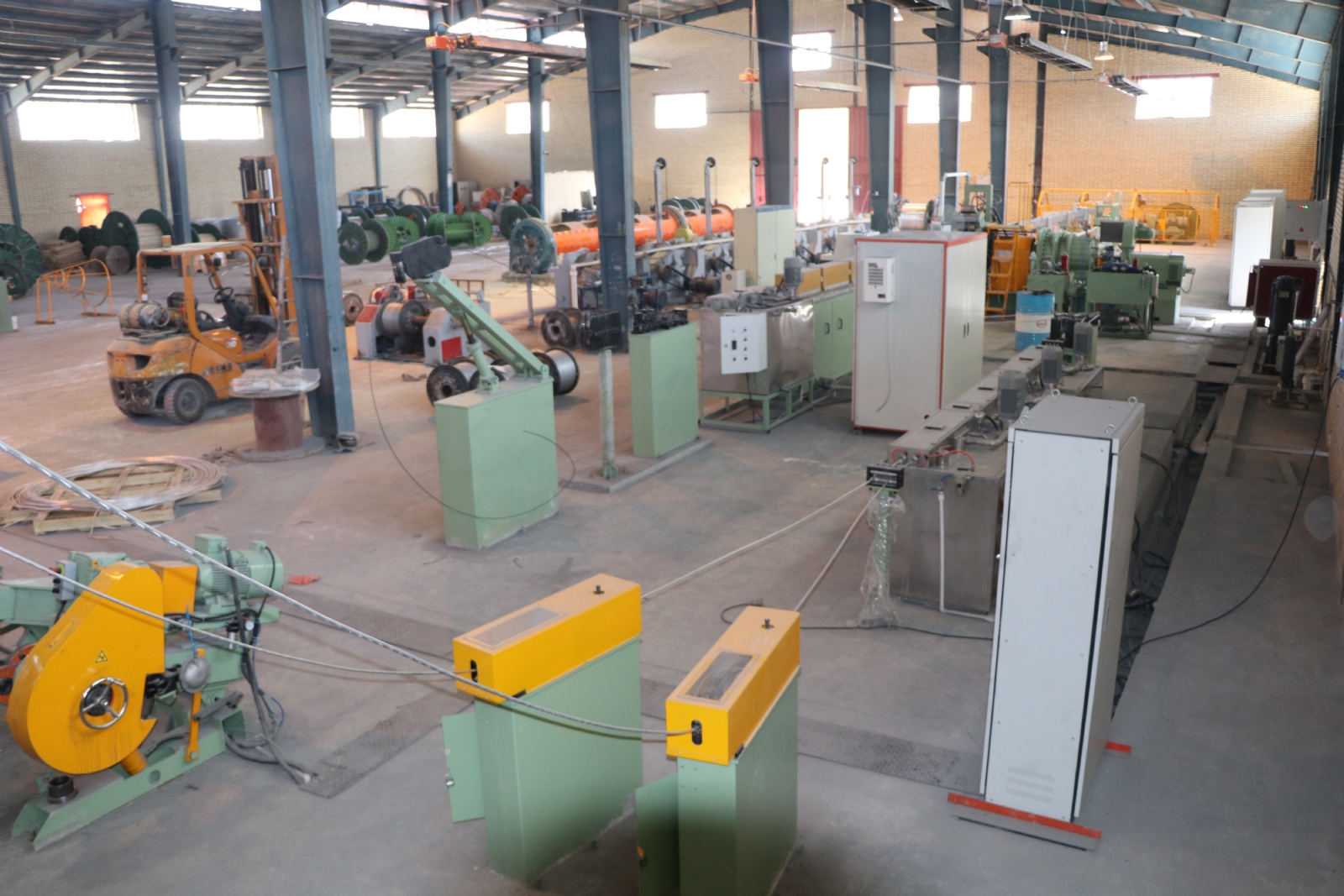Aluminum Conductor Steel Supported/Trapezoidal Wire (ACSS/TW)
.jpg)
Downloding ACSS/TW spicificattion Catalog
Applications
ACSS/TW is designed for overhead distribution and transmission lines. They are especially useful in reconductoring applications requiring increased current with existing tensions and clearances; new line applications where structures can be economized due to reduced sag; new line applications requiring high emergency loadings; lines where Aeolian vibration is a problem. It is designed to operate continuously at elevated temperatures up to 200°C without loss of strength, it sags less under emergency electrical loadings than ACSR/TW, excellent self damping properties, and its final sags are not affected by long-term creep of aluminum. ACSS/TW is available in equal area and equal diameter design. The equal area design allows equal ampacity in a smaller diameter conductor when compared with a standard ACSS conductor. The equal diameter design allows more ampacity in an equal diameter conductor when compared with a standard ACSS conductor. ACSS/TW also provides many design opportunities for new line construction: i.e., reduced tower cost, decreased sag, increased self-damping properties, increased operating temperature.
Features and advantages
Although similar to conventional ACSR/TW cable, HiTemp conductors provide distinct advantages for certain transmission line applications:
• Operates continuously at high temperatures up to 200ºC with appropriate steel core coating without loss of strength
• Up to 20% more aluminum in the same diameter as conventional ACSS
• Carries substantially more current than standard ACSR/TW
• Less susceptible to aeolian vibration fatigue due to the very low mechanical load on the annealed aluminum wire
• Can be installed to the maximum tensions allowed by NESC
• Minimum average conductivity of 63% IACS exceeds average conductivity of 61.2% for EC 1350 H19 aluminum
• Reduced sag allows for lower transmission tower height
• Reduced drag in high winds
• Long term creep is not a factor
Structure
ACSS/TW is a composite concentric-lay-stranded conductor. Steel strands form the central core of the conductor with one or more trapezoidal layers of 63% minimum average conductivity aluminum 1350-0 wire stranded around it. The steel core carries most or all of the mechanical load of the conductor due to the "0" (fully annealed or soft) temper aluminum. Steel core wires are protected from corrosion by aluminum-clad or zinc – 5% aluminum mischmetal alloy coating. The steel core may consist of a concentric stranded cable of 7, 19 or more wires.
Specification
Sim Noor Yazdan's ACSS/TW conductor meets or exceeds the following ASTM specifications:
• B500 Metallic Coated Stranded Steel Core for Aluminum Conductors, Steel Reinforced.
• B609 Aluminum 1350 Round Wire, Annealed and Intermediate Tempers, for Electrical Purposes.
• B802 Zinc-5% Aluminum-Mischmetal Alloy-Coated Steel Core Wire for Aluminum Conductors, Steel Reinforced.
• B803 High-Strength Zinc-5% Aluminum-Mischmetal Alloy-Coated Steel Core Wire for Aluminum and Aluminum-Alloy Conductors, Steel Reinforced.
• B857 Shaped Wire Compact Concentric-Lay-Stranded Aluminum Conductors, Coated Steel Supported (ACSS/TW).
(1) Data based on a nominal cable manufactured in accordance with ASTM B 857.
(2) Resistance and ampacity based on an aluminum conductivity of 63% IACS at 20°C and a steel conductivity of 8% IACS at 20°C.
(3) Ampacity based on a 200°C conductor temperature, 25°C ambient temperature, 2 ft/sec wind, in sun, with an emmisivity of 0.5 and a coefficient of solar absorption of 0.5, at sea level.
(4) Rated strengths for standard core based on Class A Galfan coated steel core wire in accordance with ASTM B 802.
(5) Rated strength for high strength core based on Class A Galfan coated high strength steel core wire in accordance with ASTM B 803.
(6) The final design of a shaped wire compact conductor is contingent upon several factors such as: layer diameter, wire width and wire thickness. The actual configuration of a given size may vary between manufacturers. This may result in a slight variation in the number of wires, number of layers and dimensions of individual wires from that shown in the chart.* Designated by "/HS" (e.g. Drake/ACSS/HS/TW)
|
|
||||||||||||||||||||



.jpg)


.JPG)
